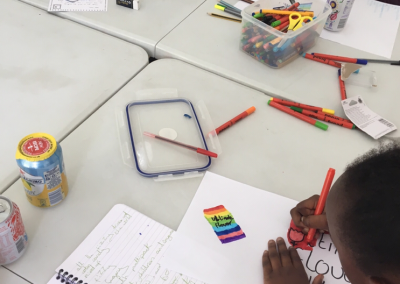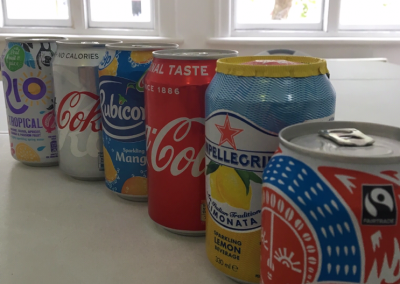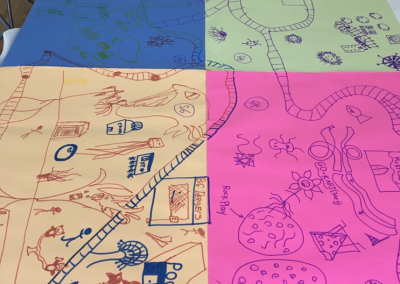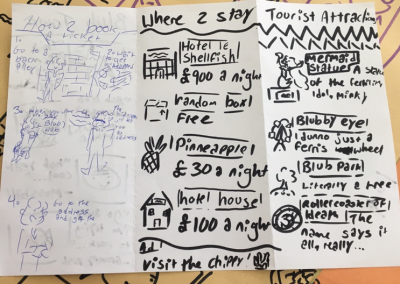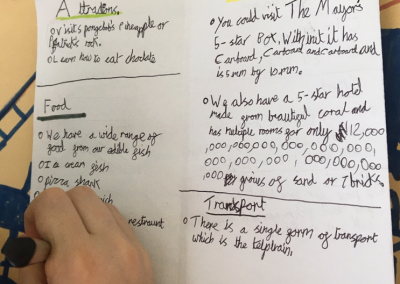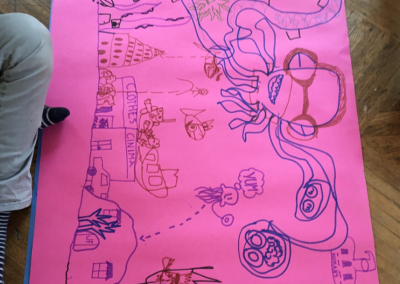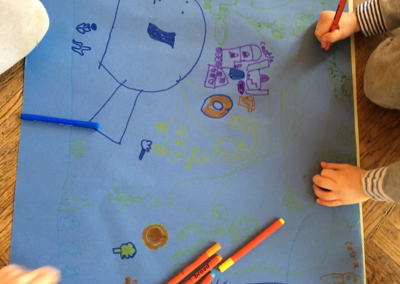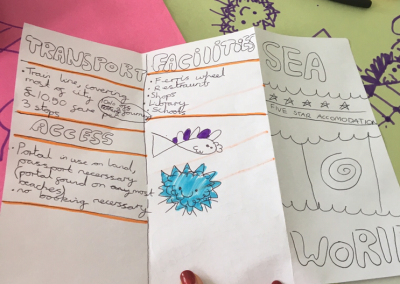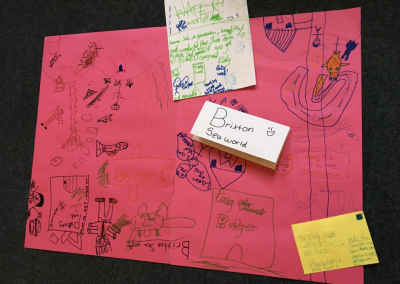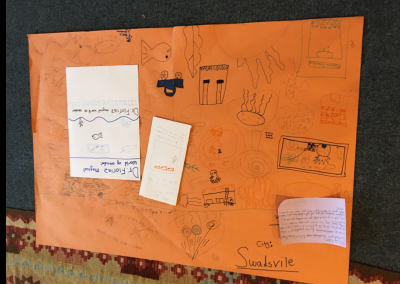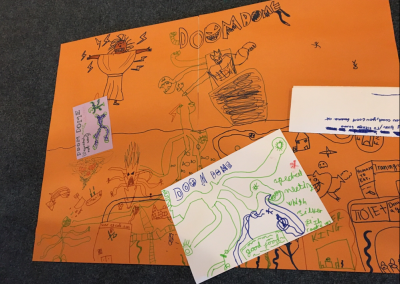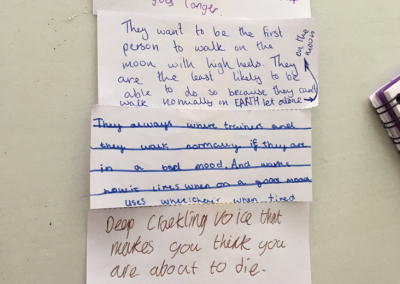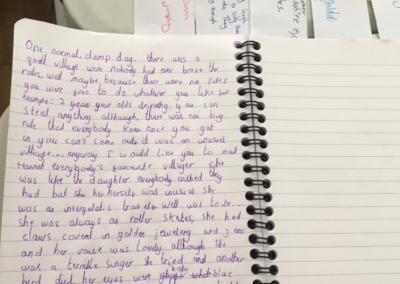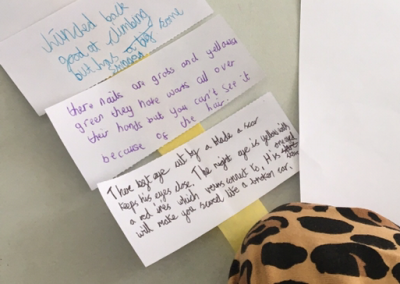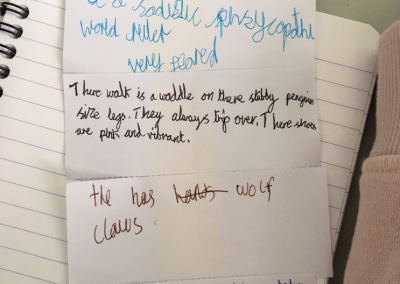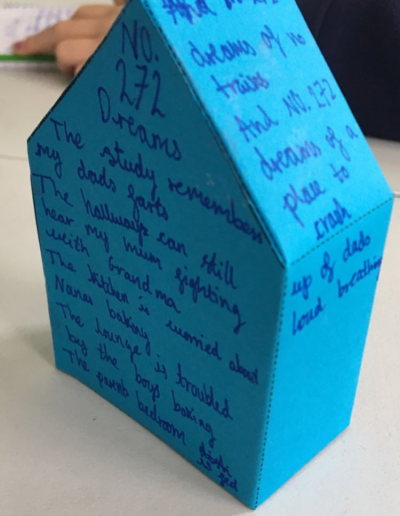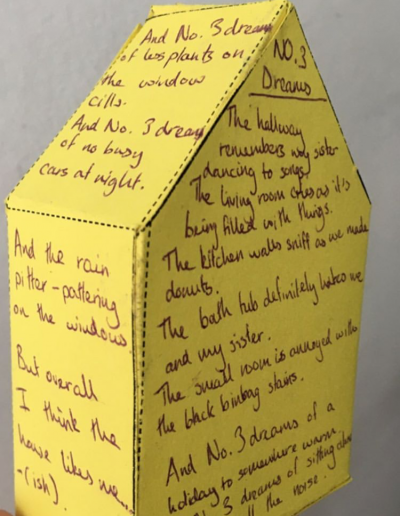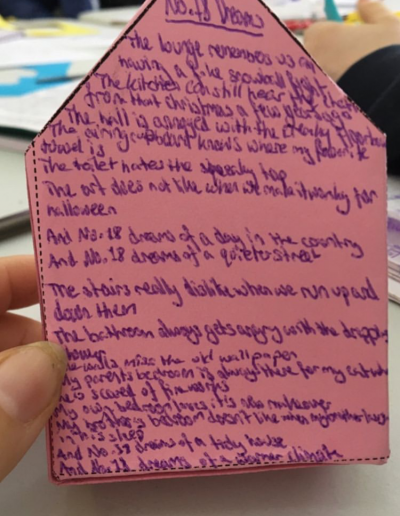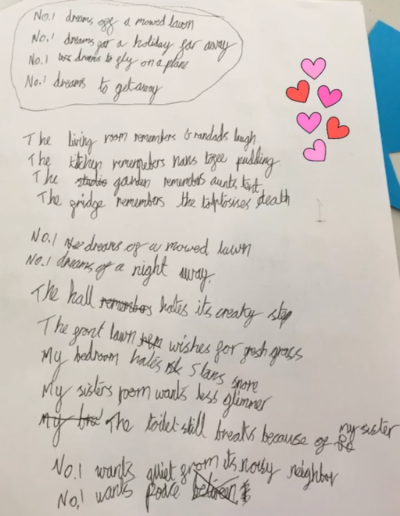
Creative Writing Projects for Home Learning
Welcome to Write Sparks! I’m Sarah; I’m an experienced teacher and English Leader and I run Write Sparks creative writing classes and events. At this unusual time, I’d like to help you as much as I can with supporting your children’s learning at home. The following projects are ideal for children in Key Stages 2 and 3, but could be adapted for older pupils too. They are all free to use and each features a downloadable PDF, which should help households where shared devices are in high demand! These projects cover fiction, non-fiction and poetry writing, in an enjoyable and accessible way.
As parents and carers, I hope you won’t mind if I offer you some advice:
- The aim of these projects is to inspire writing for pleasure. It’s important at this time that we support young people to enjoy writing; to give them an outlet for their emotions and to foster their creativity. Encourage and celebrate any writing they do, regardless of what you perceive its quality to be.
- Try to offer only positive feedback on these activities.
- Try not to focus on handwriting or spelling, or correct any mistakes that you spot.
- If at all possible, try to have a range of paper to choose from (perhaps different sizes and colours, but certainly not essential- they can all be done on plain A4, or in a notebook or old exercise book if needed) and ideally different pens and pencils in different colours.
- All of these projects can be done by hand on paper, rather than needing to use any devices in the home, which I expect will be in high demand from the rest of the family! However, if they have access to a computer and prefer to work on screen, that’s absolutely fine too.
- Each project has a plan, photos of examples and an ‘If you’re inspired…’ section offering suggestions for developing the project further.
Please feel free to share these activities far and wide, but ensure that my name and logo remain on them and respect my copyright. Once this current situation has passed and real life recommences, I will return to teaching weekly creative writing classes for young people in South East London, working with schools and organisations supporting the teaching of writing, and leading writing events and workshops across the country. I also run an online Creative Writing for Creative Mothers course, which is available now and supports mums to write a keepsake collection of writing about their experience of motherhood. You can find out more here!
In the meantime, stay well and I hope you enjoy these projects with your children. If you give any of them a go, I’d love to see pictures of their work! You can email them to me at [email protected] or send them to me on Instagram or Twitter @writesparks.
Drink Designer
Today, we’ll be putting your business skills to the test. You’ll be an inventor, chef, advertising executive, finance officer and branding designer on a mission to create an exciting new product!
Your brief is to invent a new soft drink.
You’ll need to make some planning notes first, then we’ll move on to the next stage of the project. Don’t worry about your handwriting, spelling or grammar. We’re interested in your ideas here, not how your writing looks!
The first thing to consider is how it will taste. What flavours will you use? Will it be fizzy or still?
What makes your drink different to all the others already for sale in shops? Is it sugar-free, organic, natural energy, does it give you some kind of super power…?
Who is your target audience? Is it for kids? Or is it for parents of young children, wealthy adults, teenagers or sportspeople, for example?
How much will it cost to buy in the shops? Where will you sell it? Supermarkets (which ones), health shops, restaurants, farmers’ markets…
Will you sell it in a bottle or a can, what size will it be? What colour scheme will you use?
Importantly, what will it be called? Keep the name short and snappy!
Next, you need to create a labelled diagram to show the design of the bottle or can, with the colour scheme, branding, ingredients and a barcode. You will need a logo on the label and the name of the drink should be clear to read on the packaging. You could draw and label your drink on paper, or using your computer or an app. If you have a spare can or bottle in your recycling at home, you could attach your label to try out how it would look on the shop shelves.
Now, you’ll need to take the role of an advertising specialist to design a poster and a TV/ YouTube or radio advert, to advertise your drink. Remember the soft drink market is very crowded- there are lots of products out there, how will you make yours stand out? Your poster should be eye-catching and needs a tag line, which might be funny or intriguing, to encourage people to want to find out more about your drink. Think about posters you’ve seen on billboards, bus stops or in magazines; which ones stick in your memory and why? For your TV or radio advert, you’ll need to write a script. If you have access to a phone or tablet, you could try recording or filming your advert. If you’ve got siblings or parents who are willing to help, perhaps you could sign them up as actors or camera operators!
Have you seen Dragon’s Den? It’s a TV show in which inventors or business owners ask wealthy investors (the ‘Dragons’) to give their business some money. They put together a ‘pitch’, which tells the Dragons about the business, persuades them that their idea is worth investing in and asks them for a specific amount of money. I’d like you to plan your pitch to the Dragons. You’ll need to introduce your drink and explain how it’s different to other drinks on the market. How much money are you asking for? What will they get for their money (will you give them shares in the business, eg. will they get 20% of your profits)? What will you do with the money to build your business? Will you spend it on advertising, or more bottles, or a celebrity endorsement?
Once you’ve finished planning your pitch, you could see if an adult at home is willing to play the role of a Dragon and decide whether or not they’d invest in your business!
If you’re inspired… why not invent a chocolate bar? Think about the recipe, the flavours, the packaging, the name and the advertising etc.
Or, try inventing a new vehicle. How will it move? What fuel will it use? How many passengers will it carry? Which materials will it be built from? How much will it cost to buy? Will it be available for anyone to purchase, or only for highly-trained drivers or pilots?
underwater city
We’re off on an underwater adventure! For this activity, you’re going to be creating your own imaginary sea-bed city. The more imaginative and ridiculous the better!
Your first challenge is to draw a map of your underwater city. Find the biggest piece of paper you can find for this activity!
Firstly, draw the sea bed across the bottom of your page.
Next, invent three species of plants (they might have teeth, or grow slices of pizza or walk about on the bottom of the ocean). Draw them on and label them, if you like.
Now you need three types of creatures; what do they eat? Make sure there’s a food source for them (smaller animals, a swim-through KFC, candy floss sea trees…) and what do they do for fun? Is there a bowling alley, or theme park, or sports stadium? What do the children do? Is there a school, or playground or toys?
Where do the inhabitants live? Is there a transport system? Do they get around on trains, submarines or buses? How do humans visit? Do they have pets?
Do they have a leader? Where does the leader live?
What is your underwater world called?
Now that you’ve got a good plan for your underwater city and you know how it works, I’d like you to imagine that you are the Head of the Tourist Board and it’s your responsibility to get people to come and visit your city.
You need to produce:
A brochure– this is a leaflet with information about your city for people planning holidays. Where is it? Why should we visit? Where can we stay? What/who could we see? How do we get there? Are there any special offers?
A poster– this needs to advertise your underwater world, to persuade tourists to come and visit your ocean city. Use a strong, catchy headline, eye-catching design and illustrations and include the special offers.
A postcard from a visitor to your imaginary world – what did they do? What did they eat? Who did they meet? Where did they stay?
If you’re inspired… Why not write a story set in your underwater city? Then you could create their rival city, against whom they battle for supremacy?
character creation
I’m sure you’ve been told at school that when you’re writing you should ‘show not tell’. With this activity we’re going to build a character, but in a different way to usual. Instead of starting with name, age, gender, and hair colour, we’ll be thinking about showing what our character is like through some details that are often missed in a basic character profile.
Remember- there are no right or wrong answers here. Your character doesn’t exist yet, so nothing you suggest could possibly be incorrect! It’s also absolutely fine to change your mind about your character halfway through; writers change their minds all the time. If they didn’t, we’d all be stuck with some pretty terrible ideas!
Let’s start with the eyes. Write down a few sentences about your character’s eyes. Challenge yourself to avoid obvious ‘telling’ comments such as, ‘Her eyes are blue,’ and instead opt for more interesting details. Are their eyes menacing, kindly, or cloudy? Are they creased, bruised or artfully made-up? Do they have deep-set eyes, a glinting eyebrow piercing, or a constant twitch? Perhaps they have x-ray vision, or they’re blind? There’s so much that you can show about a character by describing just one feature, without having to tell them ‘This character is old,’ or ‘He has been in a fight.’
Next, using the same ‘show don’t tell’ technique think about your character’s walk. Do they shuffle or strut, limp or stomp furiously? Are they a wheelchair-user, a stumbling and falling, or trying carefully to balance in towering heels? Do they always run, or wear rollerblades, or hobble on battered bare feet? Write a few sentences about how your character moves around.
Now write a few sentences about your character’s voice. How do they speak? Is their voice booming, or whispered? Hoarse or smooth? Are they always shouting or terribly shy? Do they have an accent, or perhaps a combination of accents that shows where they have lived?
I’d like you to think about their hands now. Are they beautifully manicured, or are the nails bitten and peeling? Is the skin loose and crepey, or covered in blue rivers of veins? Are the knuckles bruised or fake-tan stained? Write a few sentences about the hands of your character.
What are your character’s ambitions in life? Are they aiming for world-domination, hoping to win the annual hot-dog eating competition or dreaming of discovering the cure for Coronavirus? Write a few sentences about what your character would like to do in the future.
What are they afraid of? Write a few sentences about your character’s fears. Are they terrified of dogs, or water or the colour orange? Do they worry about being caught by the police, or about an alien invasion?
You’ve developed a wonderfully detailed character now, without stating all of the obvious details about them. Now that you know them well, I’d like you to draw what you imagine them to look like and, importantly, give them a name. If you’re struggling to think of the perfect name, this website gives you a list of the most popular names by decade (eg. the most popular names in the 1930s) https://www.ssa.gov/oact/babynames/decades/ or for modern characters or sci-fi you can try combining the names of two of your friends, eg. Matt and Kari could become Mari, Katt, Karti, Makar etc.
Now that you’ve crafted this brilliant character, you must feel that you know them well enough to put them in a situation and know how they’d react. I’d like you to write a story featuring your character (decide which historical period your character’s story will be set in and in which location), or a diary entry from their point of view. It’s your writing, so your story can be about anything you like and in any setting, but must feature your character.
If you’re inspired… Why not create their family, or think about these questions: where does your character go on holiday? What is their favourite meal? Who is their best friend? Does your character have a pet? What is in the picture frame on their bedside table?
home is where the art is
As lots of us are stuck at home at the moment, let’s look for inspiration right here around us.
I’d like you to make a mind map of as many memories as you can think of from the time you’ve lived in your home (or a home you used to live in, if there are more memories there)- your selection could include happy memories of Christmas trees, parties, practical jokes or games you played with friends or siblings, as well as memories of arguments, or flooding, or staying home when you felt unwell. Think about the people who spent time in your home- the family members, friends, neighbours, visitors and perhaps even pets.
Next, click here to read the wonderful poem, No. 115 Dreams by Jackie Kay, https://www.scottishpoetrylibrary.org.uk/poem/no-115-dreams/ or watch this video of her reading it and chatting about the poem: https://clpe.org.uk/poetryline/poets/kay-jackie
I LOVE this poem- the way that Jackie Kay has turned her childhood house into a character is such a powerful technique for helping her readers to imagine exactly what it was like. We get a very personal glimpse of what her home was like and we feel that we’re an old friend of hers, sharing her memories.
We’re going to have a go at writing our own poems, inspired by our childhood homes and Jackie Kay’s brilliant work. We’re going to be using some personification in our own poems too; to give your home some human qualities and feelings.
I’d like you to imagine that your home is a character- what would it dream of? Does it want to move somewhere quieter? Or see the sea? Does it want more space to stretch out? Or have closer neighbours to chat to? Try writing four lines beginning, “No. 115 dreams of…” (but change 115 for the number of your home, eg. No. 16 dreams of…).
Next, write a list of the rooms in your home.
Now we’re going to personify each room like Jackie Kay has done; what does each room hear, or want, or miss, or remember? Feel free to experiment with different verbs- perhaps it hates something, or still dances to a tune or worries about something. For example, ‘The kitchen remembers Nana’s Christmas pudding.’
You’ve got all the lines for your poem now, so it’s time to experiment with their order to build your poem. You might want to follow the pattern of Jackie Kay’s poem, with a stanza of lines about how the different rooms feel, followed by two lines about the house’s dreams, then another stanza of rooms ending with a final two lines of the house’s dreams. However, it’s your poem and there’s no right or wrong here! Move the lines around and play with the order until you’re happy with how it sounds when you read it aloud. There’s no need to make it rhyme and no rules here- we’re playing with poetry!
Finally, give your poem a title. You might want to follow Jackie Kay’s lead and use ‘No. 16 Dreams’ (using your own door number) or might opt for a totally different title- you’re the poet so it’s your choice!
If you’re inspired… Try using one of these templates to make a 3D model of your home and write your poem on it. It would make a brilliant gift for a family member, or use it to display your wonderful writing in your bedroom! https://cdn.babbledabbledo.com/wp-content/uploads/2013/10/Paper-Houses-Template-BABBLE-DABBLE-DO.pdf

